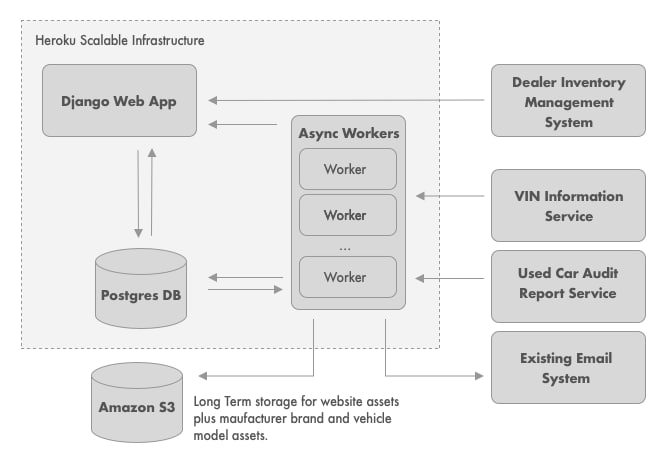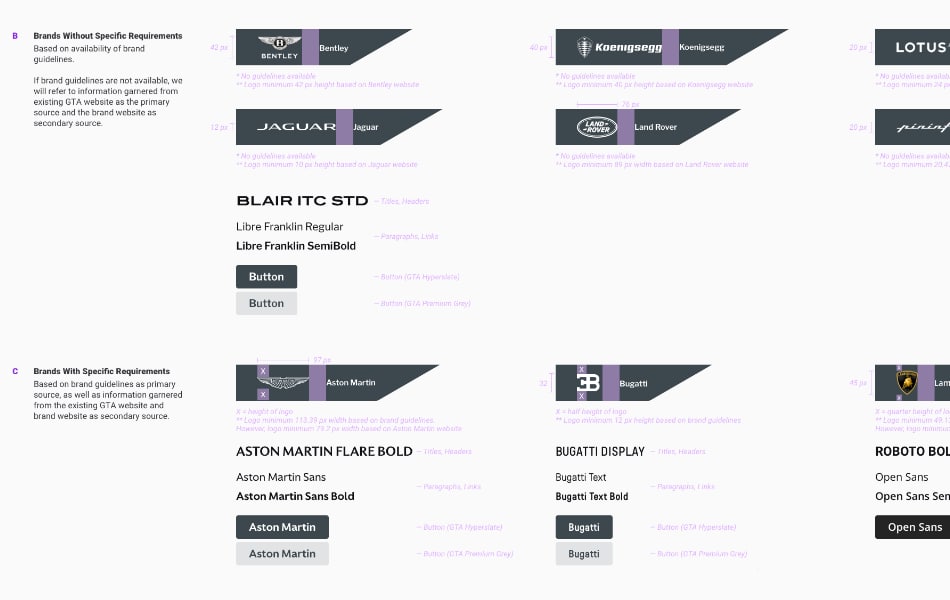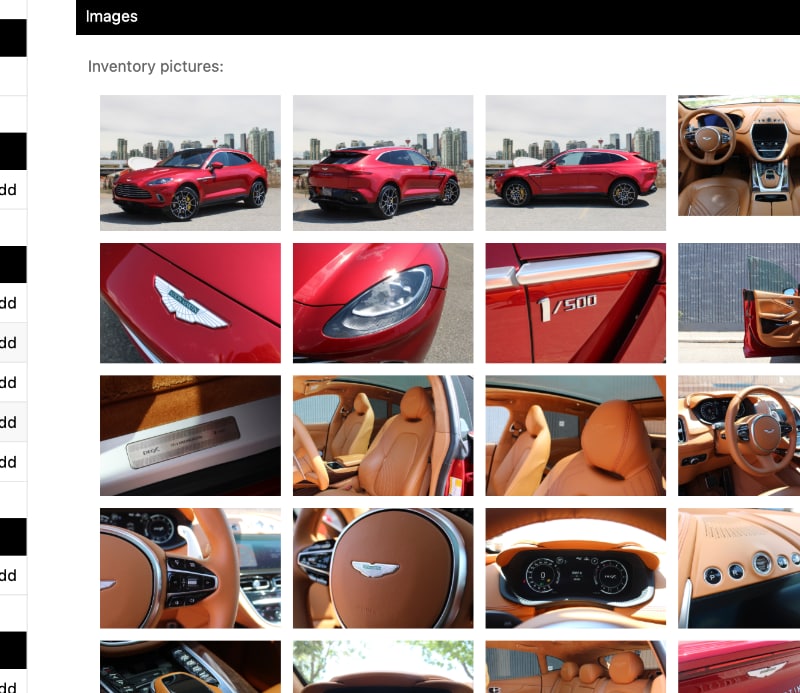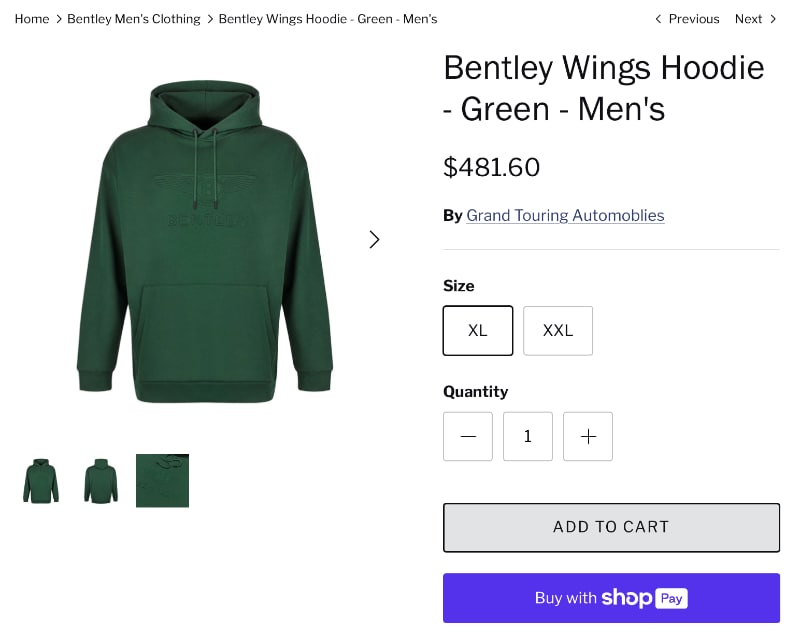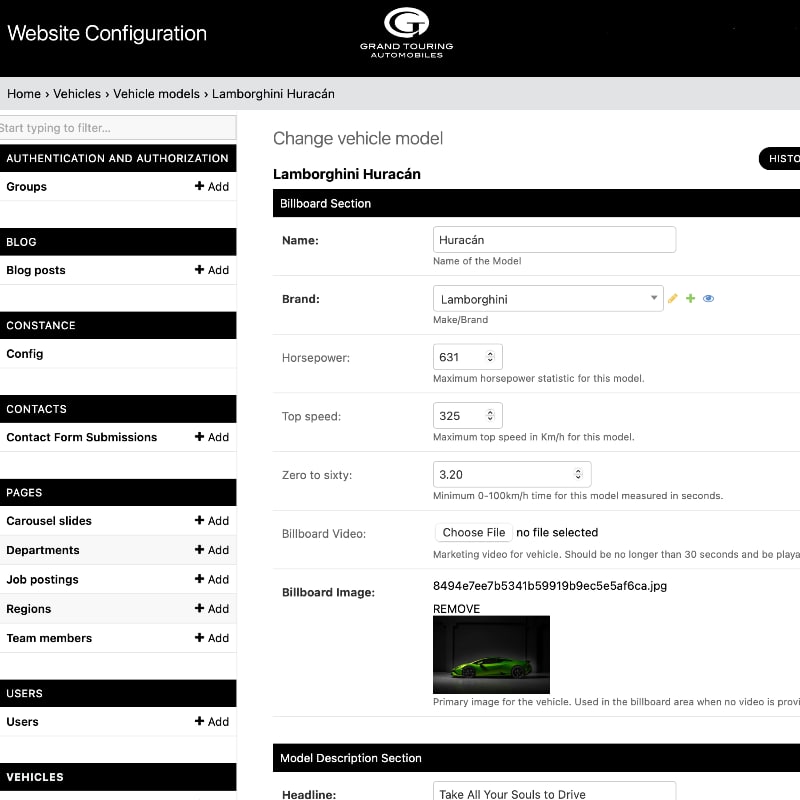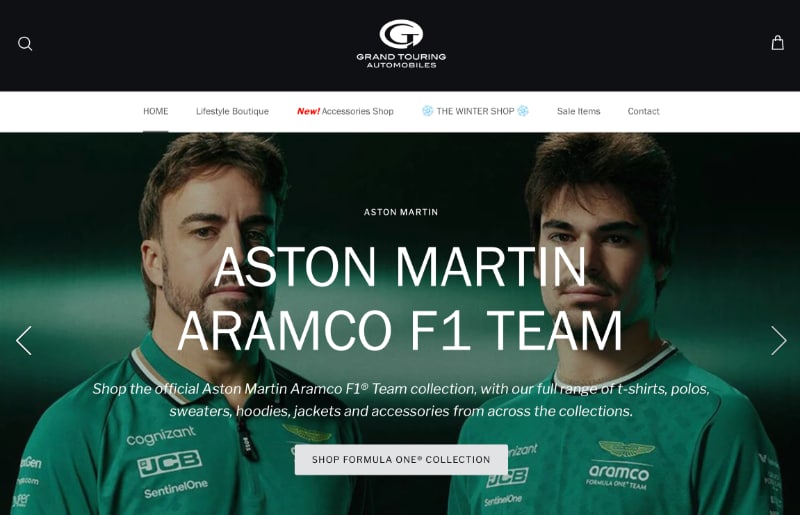Case Study
Building an Automotive Dealership Platform
Custom build of a full dealer web management platform handing vehicle inventory, e-commerce, email routing and ad campaigns.
Back to home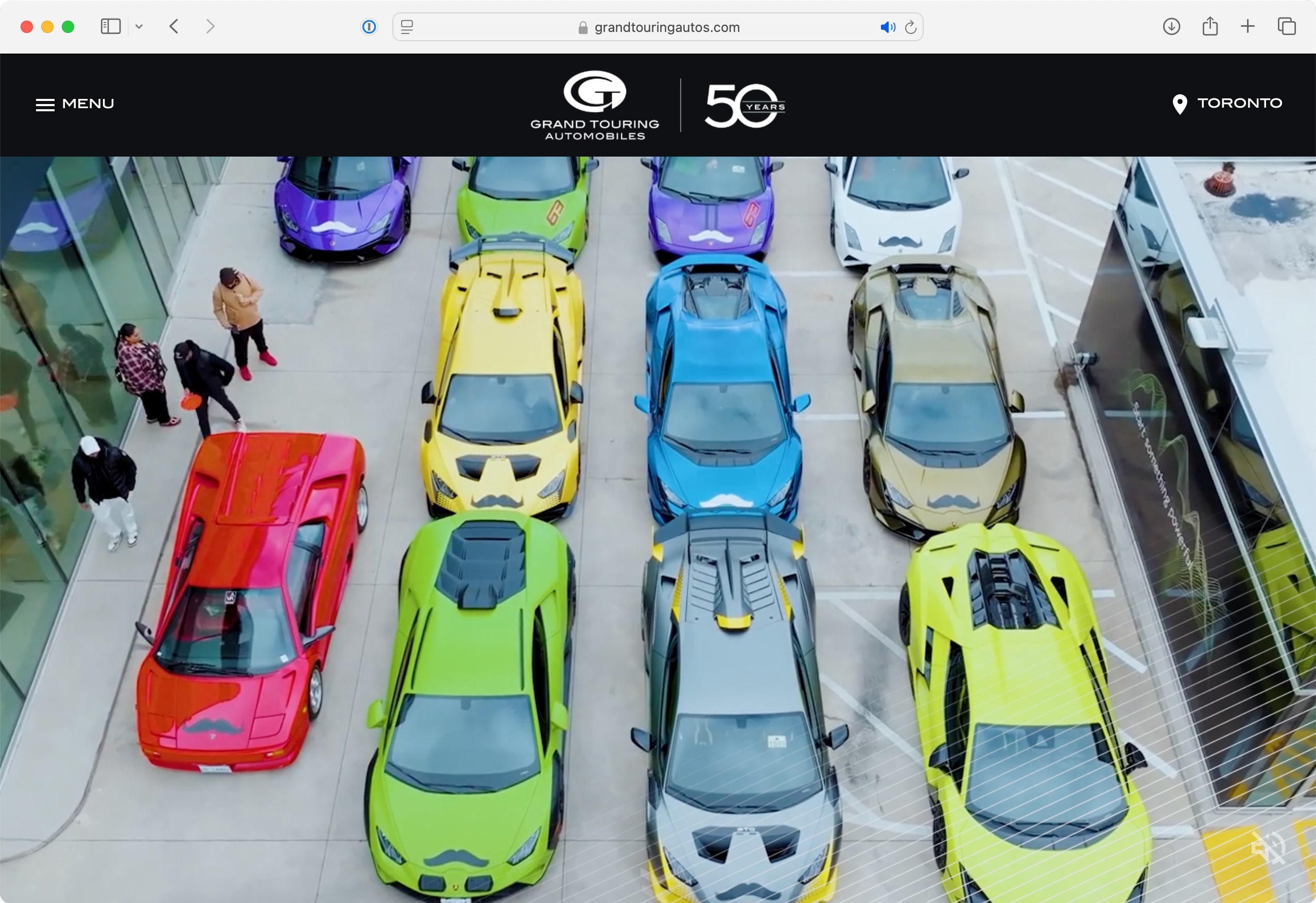
Project Overview
Grand Touring Automobiles (GTA) is the premier exotic and luxury car dealership in the Greater Toronto area. GTA was looking to create a new web experience for their online users to set them apart from the competitors, their existing website was stale and used a common automotive listing platform. Additionally they were looking to take control of their online listings to allow quicker updates rather than relying on a 3rd party to make site changes.
My Role
I had the pleasure of directly leading this project from the RFP response and bid process, through ideation and design, development and finally deployment and post launch support. During the course of the project brought in two designers, two developers, and QA resources. We worked closely with the GTA internal staff and third party vendors to understand GTA’s needs, and integrate with their processes. My role in included leading the both the business and client relationship, and the design and development direction ensuring that we were able to solve the client needs within the budget and time allowances.
